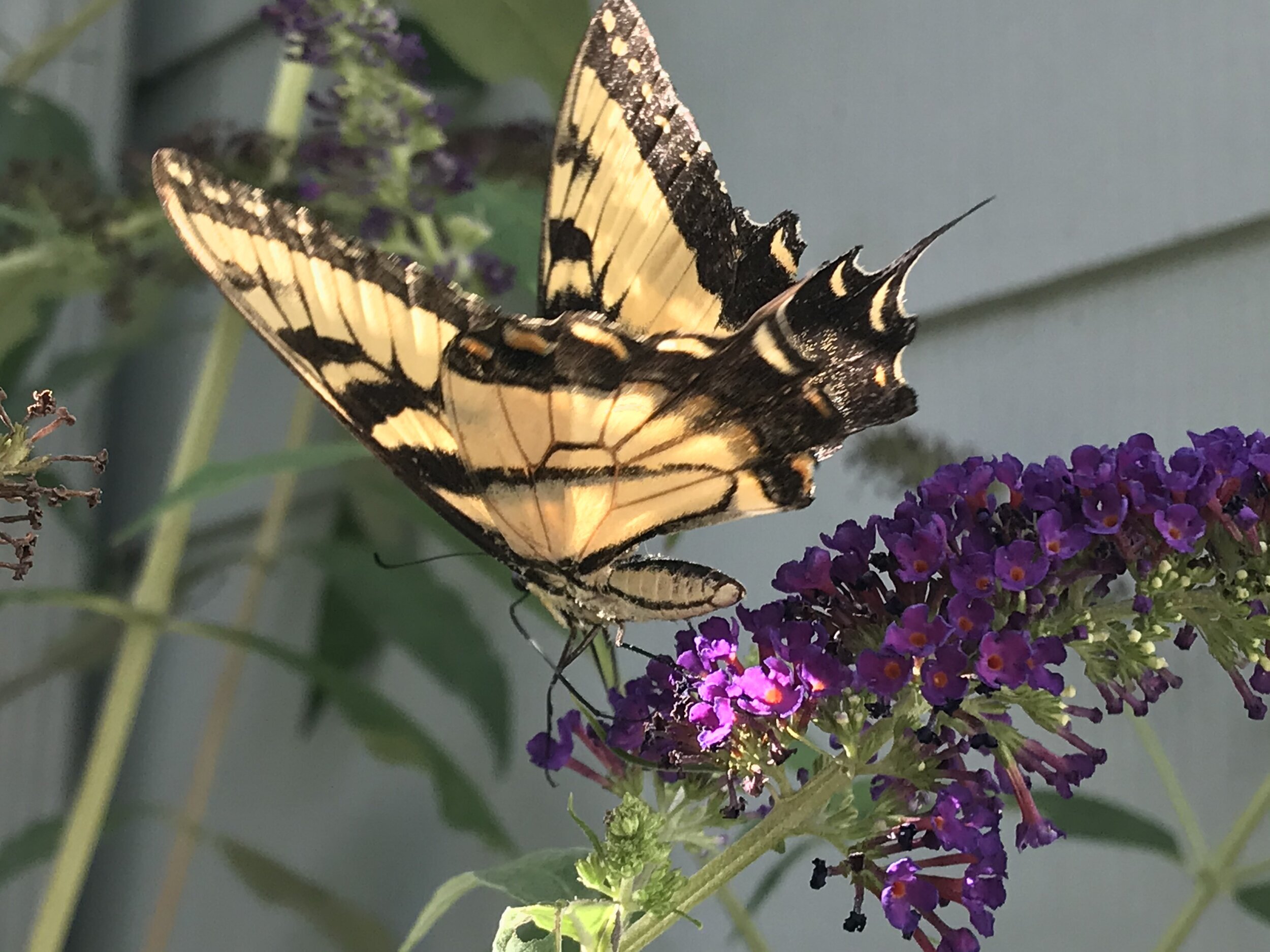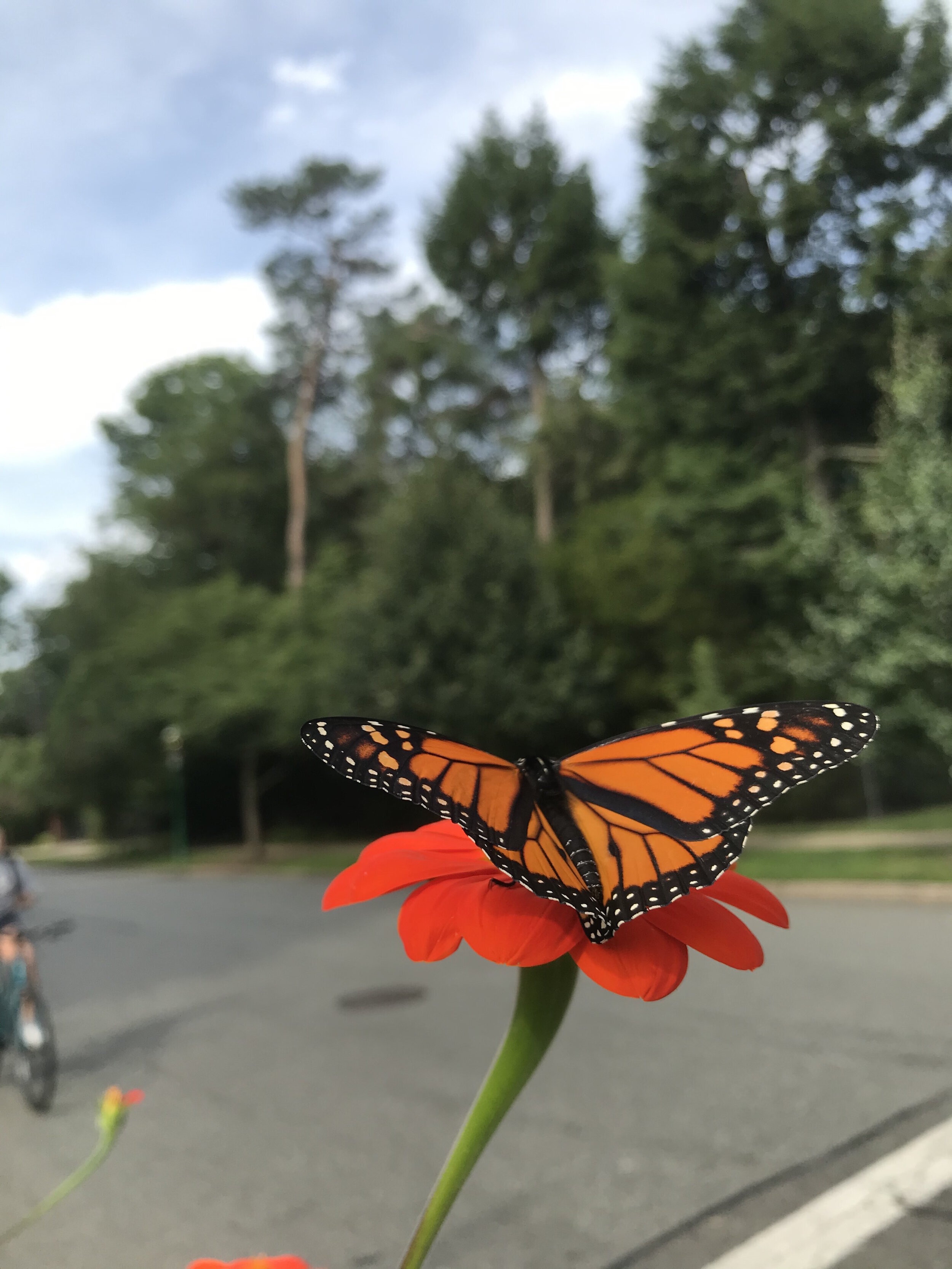We Can Still Save the Monarch Butterflies
By Shankar Chaudhuri
Monarch butterflies have started descending on our backyard and neighborhood plants in the Northeast as they do every late summer. They seem to belong to the family of eastern monarchs which breed in Canada and the Great Plains and winter in Central Mexico. Their counterpart, the western monarchs, in turn breed west of the Rocky Mountains before wintering in southern California.
In author’s town (photos by Shankar Chaudhuri)
In author’s town (photo by Shankar Chaudhuri)
In all likelihood, these eastern monarchs are at the onset of their 3,000-mile long journey to the mountains of Central Mexico where the Monarch Butterfly Biosphere Reserve, a UNESCO heritage site, serves as the sanctuary and temporary home for millions of monarch butterflies for the winter.
The importance of monarchs can hardly be overstated. Aside from their sheer beauty, monarchs serve a critical balancing act for our ecosystem as great pollinators. Unfortunately, they’re on the verge of an existential threat in North America. The number of western monarchs is believed to have declined by more than 99 percent since the 1980s, and that of eastern monarchs by an estimated 80 percent.
In author’s town (photo by Shankar Chaudhuri)
The destruction of milkweed plants has been a major reason for the drastic decline of the monarch butterfly population. Milkweed plants on which monarchs lay eggs and which provide the only source of food for the nascent caterpillars have been destroyed all across the United States to make room for land conversion or urban development. In addition, widespread herbicide use has made many milkweed plants too toxic for laying eggs by monarchs, and for consumption by caterpillars. Finally, global warming has also adversely impacted the breeding and migration patterns of monarchs.
Monarch Butterfly Biosphere Reserve, Michoacán, Mexico
We can still make a significant contribution to the preservation of this iconic species by planting milkweed in our yards and urban spaces. Milkweed species vary depending on the geography and climate of a specific region. World Wildlife suggests that one can find out about the right type of milkweed to purchase by visiting Monarch Watch. Monarch Watch is a non-profit organization of students, teachers, volunteers and researchers dedicated to the study of the monarch butterfly. You can also check out Xerces Society's Milkweed Seed Finder if you need help finding seeds specific to your area. Regardless of whether you prefer seeds or a seedling, please make sure that they are organic and have not been treated with insecticides.
Finally to find out more about creating good backyard butterfly habitat you can contact the Monarch Joint Venture (MJV). Since 2009, the MJV has led efforts in bringing together partners from across the United States to conserve the monarch butterflies.




